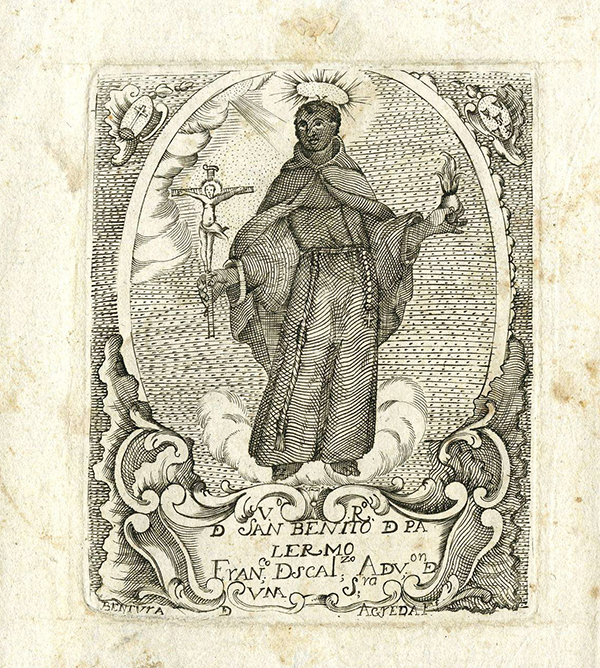
April saint: St. Benedict the African
African Americans in the United States have two patron saints: one is Dominican — St. Martin de Porres — and the other, whose feast day the Church celebrates on April 3, is a Franciscan brother, Benedict the African.
Benedict was born in Messina, Italy in 1526, the son of Cristoforo and Diana Manasseri, Africans who had been taken from their country as slaves and brought to Italy to work on the estate of Chevalier de Lanza. Because of their “loyal service,” their master granted their son his freedom from birth, and for a while, Benedict did farm labor for meager wages. Though a hard worker, due to his poverty Benedict never attended school and remained illiterate his entire life.
Italy in the 16th century was not immune from racial prejudice and hatred, and more than once Benedict, who was mistakenly called “the Moor” from the Italian word Moro, meaning “dark skinned,” suffered from prejudice and racially motivated insults. The patience with which he bore these trials attracted the attention of a man named Jerome Lanze, who invited the young man to join him and a group of hermits who lived on Mount Pellegrino. There, they followed the Rule for Hermits written by St. Francis of Assisi, and Benedict soon became their cook.
Because of his humility and holiness, Benedict was made superior of the group when Lanze’s term in that position ended. In 1564, Pope Pius IV decided to disband these small hermit societies and have them instead join established religious communities. Benedict, who consequently became a member of the Friars Minor, soon found himself in Palermo at the Franciscan Friary of St. Mary of Jesus. Though he began as a cook for that community as well, his other gifts soon made themselves known, and he was promoted to the position of Master of Novices. This was followed by a further promotion to Guardian of the Community, which was a remarkable situation for a man who was Black, illiterate and never ordained. It was said that in addition to his spiritual gifts, he also had a reputation for healing and miracles, and many people traveled great distances to see and talk to him.
Positions of leadership within the Franciscan community are term limited, so when Benedict’s was concluded, he happily returned to his work in the friary kitchen. There he had a certain knack for being very creative with food preparation, feeding large numbers of people with a relatively small supply of available resources. More than one person believed that God was working next to him in the kitchen, helping Benedict “multiply the loaves” so to speak.
Benedict died peacefully in Palermo in 1589 and was declared patron of that city three years later. Beatified in 1743, he was canonized by Pope Pius VII in 1807. In the United States, at least seven historically Black Catholic parishes bear his name including the oldest Catholic Church for African Americans in Savannah, Georgia, St. Benedict the Moor, which was established in 1874.
His feast is celebrated April 3.
Sources for this article include:
aaregistry.org/story/from-africa-to-sicily-saint-benedict-the-black
catholic.org/saints/saint.php?saint_id=557
franciscanmedia.org/saint-of-the-day/saint-benedict-the-african
Monti, Dominic V, OFM. franciscantradition.org/blog/17-benedict-the-african

